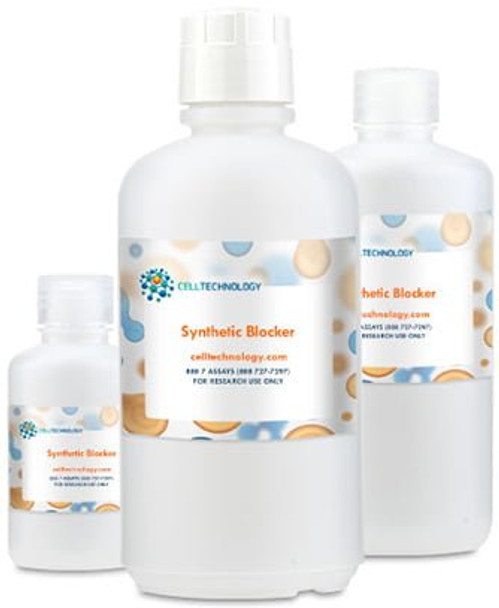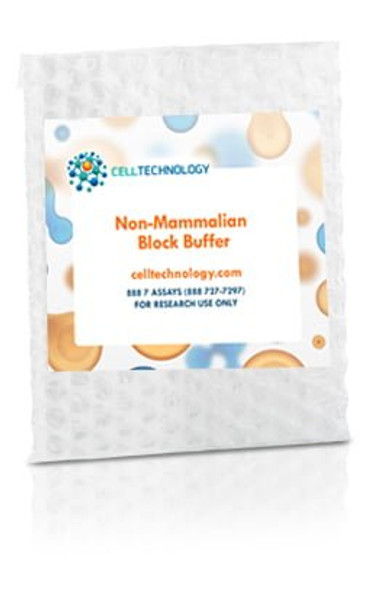SynBlock with Tween and Synthetic Blockers | EBB300-1/EBB300-2/EBB300-3/EBB300-4
- SKU:
- 306-EBB300-1/306-EBB300-2/306-EBB300-3/306-EBB300-4
Description
SynBlock with Tween and Synthetic Blockers | EBB300-1/EBB300-2/EBB300-3/EBB300-4 | Cell Technology
Additional information
Bottle Size: 100 mL, 500 mL, 1 L, 10 L
Improves Assays
- Increases the Sensitivity of the Assay. This is done by stabilizing the antigenic and functional regions of the absorbed protein.
- Reduces Background Noise. Block buffers inhibit nonspecific binding to uncoated regions of the plate and non-specific binding sections of the absorbed proteins. This leads to lower background noise and high specific signal.
- Increases Efficiency and Extends the Shelf-Life of the Coated Plates. With a longer shelf-life, plates may be prepared in large batches to be used over time. Large batch sizes will increase efficiency and reduce plate-to-plate variability to increase consistency.
- Conserves Valuable Reagents. By promoting a higher specific signal, less protein may be needed to coat the plate and less of the detection molecules may be needed to generate a signal when the proper blocker is used.
Directions
Once your plate has been coated with an antibody or antigen, aspirate or dump out the coating solution. Then, simply pipette 300-400uL per well of block buffer and let it incubate (Cell Technology recommends a minimum incubation of 3 hours).
ECD
Cell Technology’s Synthetic Blocker is a novel non-protein blocking formulation designed to eliminate interference and nonspecific background noise associated with antibody-coated ELISA formats and sandwich ELISAs. Because Synthetic Blocker contains inert non-reactive blockers, it reduces the amount of nonspecific binding of enzyme-labeled conjugates to blocked plate surfaces. The use of this blocking formulation provides superior background performance without the use of conventional cross-reactive protein additives.










